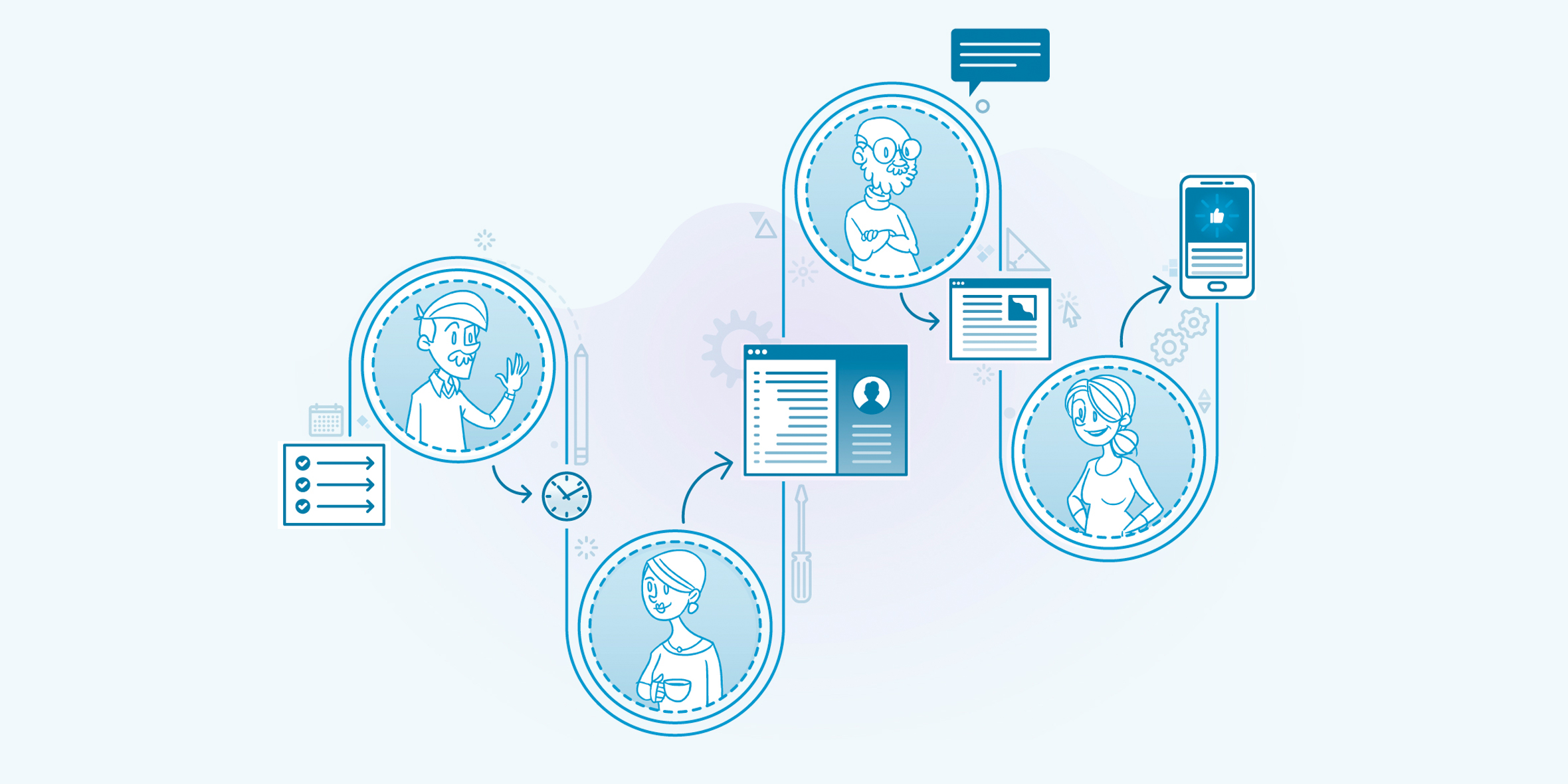Six ways to add a human perspective to process reengineering projects

Six Sigma and related methods like DMADV and Lean Six Sigma are powerful ways to improve processes and systems. They have been used successfully for decades to reduce errors and increase efficiency, but there is a blind spot that can undermine their effectiveness: not adequately accounting for the human perspective.
“We are trained to look at how to make [a process] faster and more efficient rather than how to make it engaging.” – T.B., Six Sigma Black Belt
Any process that involves the actions of people will contain hidden complexity and opportunity. Business processes and systems must be aligned with the way human beings think, feel, and act to maximize value and minimize risk.
We spoke with Six Sigma Black Belts to discuss how a human-centered approach can improve outcomes and increase impact. Here are 6 ways to include the human dimension in your next process reengineering project.
1: Learn what people are actually doing and what they are trying to do
Why
If you understand the drivers of satisfaction and frustration, you can design a better solution—one that does what users really need it to do, and one that will be enthusiastically embraced and adopted. What are the things you don’t know?
How
- Sit with and observe a few people at key steps in the process. You may see variations in the current state process that you didn’t know existed. You will better understand what the new process needs to accomplish, build goodwill, and maybe find a champion of the redesigned process.
“By talking to users you find out what’s really happening and where it’s really happening.” – P.S., Six Sigma Black Belt
2: Measure intangibles like satisfaction, frustration, and value
Why
It’s relatively easy to measure things like defects or the time it takes to complete tasks, but these metrics are only part of the picture. The qualitative aspects of a process are challenging to define and measure, but they can provide key insights even when they are not comprehensive. Factoring emotional impact can help prioritize effort and point to areas of opportunity.
How
- In user interviews, observe and record emotional state. Become a keen observer and listen not only to what they say but also how they say it—their tone, passion, and body language.
- Seek input from employees who have regular interactions with your customers such as call center representatives.
- Establish ongoing customer feedback processes that include online forms, intercept surveys, NPS surveys, and social media monitoring.
“If our customers aren’t having a good experience we need to fix it – the 5% that are not satisfied are the most vocal.” –T.B., Six Sigma Black Belt
3: Include the human perspective in process maps of current and future state
Why
At every point in a process, there are people having an impact on the way it progresses. Visualizing the relationship between processes and the people who interact with them will help ensure that requirements are complete.
How
- Enhance your current and future state process maps with insights about what users are trying to do, how they are doing it, and what they are feeling at each step of the process
- Create user stories to describe how the new process will be experienced and meet the needs of people
“The human-centered design perspective helps define what needs to get developed.” – T.B., Six Sigma Black Belt
4: Create low-fidelity, low-cost prototypes to test assumptions and learn quickly
Why
It’s natural to assume that a new process will be embraced by users simply because it seems obviously better than the current state, but that’s not always going to happen. Validate your ideas with users by doing prototypes of key touch points in the new process.
How
- Do a walk-through in the real environment
- Prototype screen-based tools using low fidelity mockups (making these from paper is quick, cheap, and works great)
- Keep it simple, but do it often!
“The user feedback gained from developing a physical model that the users can touch and see facilitates an evaluative response that the project manager can employ to modify existing requirements as well as develop new ones.” –Bryan Carey, iSixSigma.com
5: Focus on facilitating conversations
Why
Seeking the input of diverse stakeholders—especially in working sessions—adds tremendous value to the process. Brainstorming sessions generate ideas for improvement, but they can also make implementation easier. People will embrace a new process if they were part of its creation.
How
- Working sessions with multiple stakeholders can be tricky to manage. Focus on identifying a facilitator who can listen deeply and has the strength to redirect the conversation when necessary.
“The most important key to the success of a project is the facilitation skills of the manager.” – A.G., Lean Six Sigma Black Belt
6: Tell the story
Why
Process improvement sometimes requires a culture shift and a new way of thinking about work. Effectively communicating how a new process will help people do their jobs better is critical to getting the adoption you need from the top down. For example, some people assume the goal of streamlining or automating a process is to reduce headcount rather than eliminating repetitive manual tasks to allow more time for adding real value.
How
- Present findings and progress at every stage of the project with a focus on why the project is being done and how the outcome will be a better experience for employees and customers
- Coach and provide materials to leaders and managers to help them understand the how as they advocate for the improvements
“People want to know: how is it going to be better for me?” – T.B., Six Sigma Black Belt
People are part of any current process—it has been shaped by their behaviors, preferences, and workarounds. People will be integral to the success of any future process, too. Understanding individuals’ experiences with a human perspective helps to identify impactful points in the process as well as opportunities for improvement.



